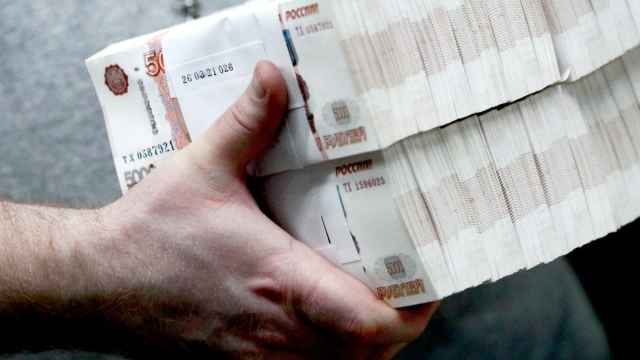The ongoing economic crisis and the persistent deficits of the United States have increasingly called into question the dollar’s role as the world’s anchor currency. Recent moves to internationalize China’s renminbi have led to anticipation of a looming shift in the global monetary system. Many prominent economists, including the members of a United Nations panel headed by the Nobel laureate economist Joseph Stiglitz, are recommending a “Global Reserve System” to replace the dollar’s hegemony. But the long history of global anchor currencies suggests that the dollar’s days on top may be far from over.
In ancient times, India ran a large trade surplus with the Roman Empire. As Pliny wrote in the first century: “Not a year passed in which India did not take 50 million sesterces away from Rome.” That trade imbalance implied a continuous drain on gold and silver coin, causing shortages of these metals in Rome. In modern terms, the Romans faced a monetary squeeze.
Rome responded by reducing the gold and silver content (the ancient equivalent of monetization), which led to sustained inflation in the empire. But the frequent discovery of Roman coins in India suggests that Roman coinage continued to be accepted internationally long after it must have been obvious that its gold or silver content had fallen.
In the 16th century, Spain emerged as a superpower following its conquest of South America. Between 1501 and 1600, 17 million kilograms of pure silver and 181,000 kilograms of pure gold flowed from the Americas to Spain, which spent the money on wars in the Netherlands and elsewhere. This increase in liquidity caused both an economic boom and inflation across Europe.
Despite this wealth, Spain became increasingly indebted, eventually defaulting three times — in 1607, 1627 and 1649 —and heading into sharp geopolitical decline. Yet Spanish silver coins (known as “pieces of eight” or Spanish dollars) remained the main currency used in world trade right up to the American Revolutionary War. In fact, Spanish coin remained legal tender in the United States until 1857 — long after Spain itself had ceased to be a major power.
By the middle of the 19th century, the world was functioning on a bimetal system based on gold and silver. But, following the British example, most major countries had shifted to a gold standard by the 1870s.
The Bank of England stood ready to convert a pound sterling into an ounce of (11/122 fine) gold on demand. That system was disrupted by World War I, but Britain went back to a gold peg in 1925. As the Great Depression took root, however, the Bank of England was forced to choose between providing liquidity to banks and honoring the gold peg. It opted for the gold peg in 1931.
Yet pound sterling continued to be a major world currency until well after World War II. Even as late as 1950 — more than a half-century after the United States had replaced Britain as the world’s largest industrial power — 55 percent of foreign exchange reserves were held in sterling, and many countries continued to peg their currencies to it.
Three things should be clear from this history. First, a global monetary system based on precious metals does not resolve the fundamental imbalances of a global economic system. Second, precious metals do not resolve the problem of inflation. And, finally, the anchor currency and the underlying ecosystem of world trade often outlive the geopolitical decline of the anchor country by decades.
A new economic order was established after World War II, with the United States as the anchor country. The Bretton Woods system linked the U.S. dollar to gold at $35 per ounce, with other currencies linked to the dollar (though occasionally allowed to make adjustments).
The flaw in the system was that it underpinned global economic expansion for only as long as the United States was willing to provide dollars by running up deficits — the same deficits that would eventually undermine America’s ability to maintain the $35 per ounce gold price. In 1961, the United States responded by creating the London Gold Pool, which obliged other countries to reimburse the United States for half of its gold losses. But this arrangement quickly bred discontent, with France leaving the Gold Pool in 1967. The Bretton Woods system collapsed four years later.
Or did it? Despite the problems of the 1970s, the dollar remained the world’s dominant currency, with successive generations of Asian countries pegging their exchange rates to it. As with the Bretton Woods system, a peripheral economy (for example, China) could grow very rapidly even as the anchor economy (the United States) enjoyed cheap financing. China’s relative rise did not diminish the dollar’s role — and may even have enhanced it. Indeed, like the Japanese during their period of rapid growth, the Chinese have, until recently, resisted internationalization of the renminbi.
So, are we entering a post-dollar world? Despite all of the pain caused by the Great Recession, there is no sign that the world is forsaking the greenback. Investors remain willing to finance the United States at rock-bottom interest rates, and the nominal trade-weighted index of the dollar has not collapsed.
Even if China replaces the United States as the world’s largest economy within a decade, an anchor currency can be more resilient than the economic and geopolitical dominance of its country of origin. That is why the dollar will most likely remain the dominant global currency long after the United States has been surpassed.
Sanjeev Sanyal is Deutsche Bank’s global strategist. © Project Syndicate.
A Message from The Moscow Times:
Dear readers,
We are facing unprecedented challenges. Russia's Prosecutor General's Office has designated The Moscow Times as an "undesirable" organization, criminalizing our work and putting our staff at risk of prosecution. This follows our earlier unjust labeling as a "foreign agent."
These actions are direct attempts to silence independent journalism in Russia. The authorities claim our work "discredits the decisions of the Russian leadership." We see things differently: we strive to provide accurate, unbiased reporting on Russia.
We, the journalists of The Moscow Times, refuse to be silenced. But to continue our work, we need your help.
Your support, no matter how small, makes a world of difference. If you can, please support us monthly starting from just $2. It's quick to set up, and every contribution makes a significant impact.
By supporting The Moscow Times, you're defending open, independent journalism in the face of repression. Thank you for standing with us.
Remind me later.





